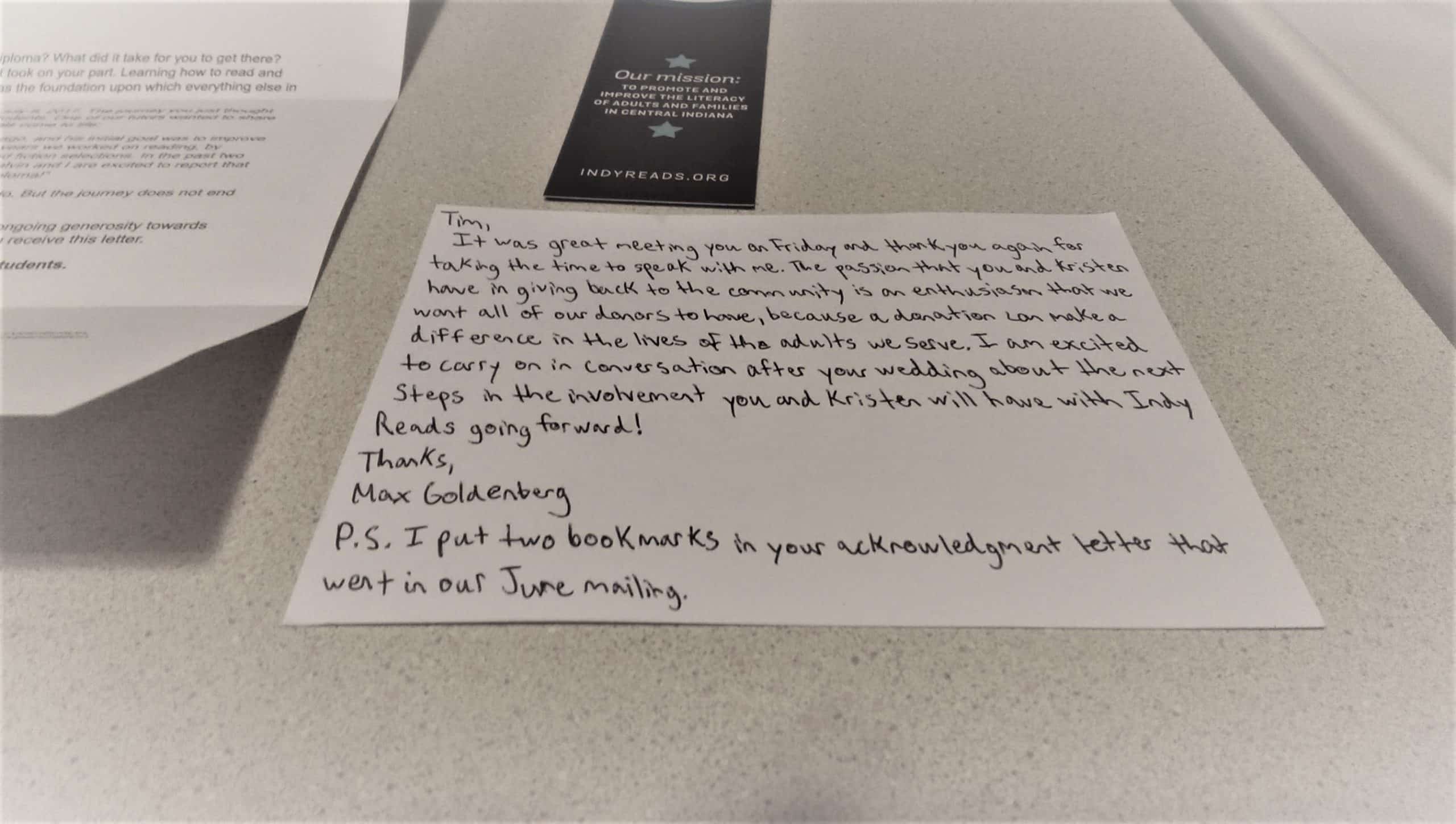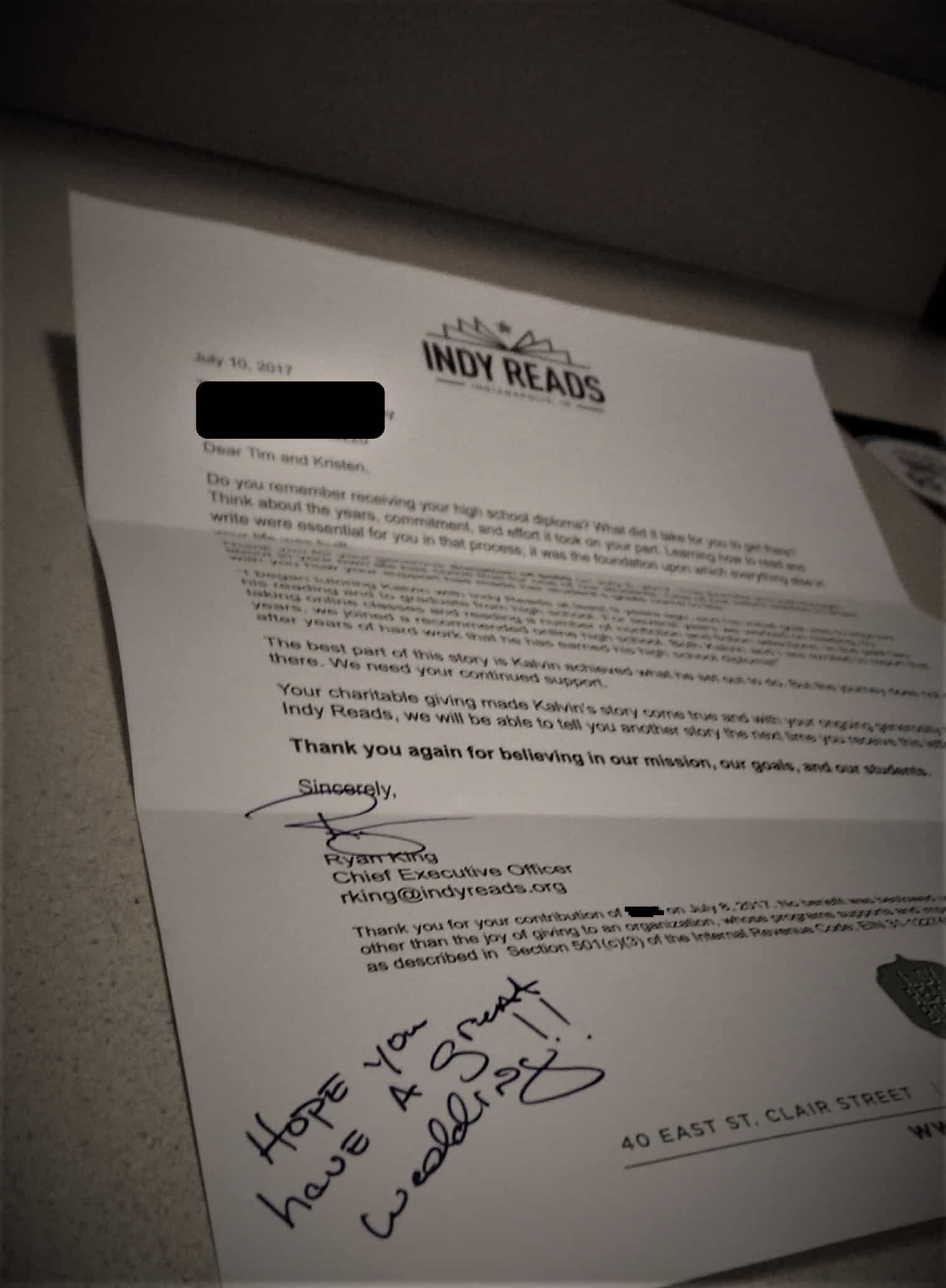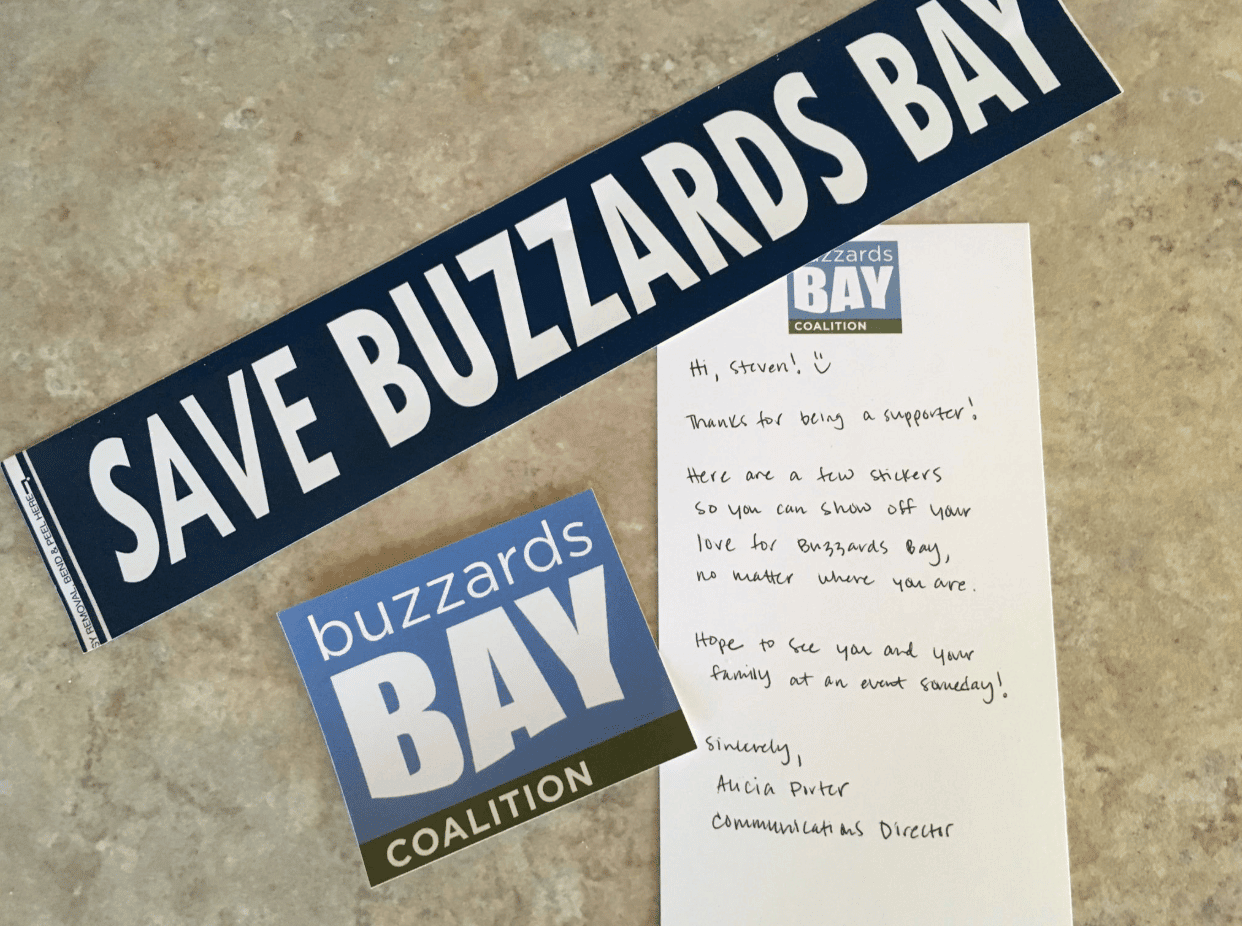Building Donor Relationships With Direct Mail In A Digital World

There was a time not too long ago when digital channels like email, social media, and text messaging were seen as complementary to direct mail: the cornerstone of any robust donor communications strategy.
Unfortunately, direct mail seems to have fallen out of favor with nonprofit communicators. Perhaps it’s due to the speed and ease through which supporters can be contacted online, or a perception that it’s somehow less effective in today’s digital world.
In any case, fundraisers who stop sending direct mail do so at their own peril, especially in an age when we are all distracted by our devices while at the same time thirsting for authentic personal connections. As cause-based organizations, nonprofits are uniquely positioned to say thank you and communicate impact, something that few other brands can do in a genuine way.
This isn’t to say that the pendulum should swing all the way back, eschewing digital channels for an analog-only approach. Research shows that multi-channel communication efforts generate the biggest fundraising results. And yes, that includes direct mail!
When it comes to direct mail, most would probably groan at the thought of having to design and distribute flyers, glossy postcards, form letters, and brochures. These items have their uses, for sure, but if you really want to see results from your direct mail efforts (while having fun in the process) consider producing pieces specifically designed to build and enhance existing donor relationships.
Why make building donor relationships a goal?
Maybe you’re thinking, “What about the money?” Yes, your direct mail efforts should include direct appeals for monetary support. But those appeals shouldn’t represent the entirety of your direct mail efforts.
With donor retention rates hovering near 43% every year for the past two decades, a unique opportunity exists for fundraisers who make stewardship (thanking and reporting on outcomes) a priority.
You might relate to this story from The Burk Donor Survey, having hopefully heard it from your own pool of donors, or experienced it as a donor yourself: “There were two instances this year where I made gifts over and above what I had intended and they both involved personal contact from someone in the development office (director or gifts officer). Being thanked for my previous gift was much more persuasive than receiving multiple emails and direct mail letters.”
Yes, direct mail can be personal! But it requires an allocation of time and resources and a willingness to take a long-term view.
Here are a few ideas to use direct mail to help you build donor relationships.
- Handwritten notes to new donors
- Stewardship for monthly donors (5-7x per year)
- Quarterly print newsletter
- “Prime the pump” thank you prior to a big campaign ask
1. Handwritten notes to new donors
Speaking of donor retention rates, the percentage of first-time donors who come back and give a second gift is only around 20%. If you have any hope of building meaningful donor relationships with brand new donors, you must make a positive first impression.
Research shows that the best thing you can do to improve first-time donor retention rates is to call donors to say thank you. But in cases where you don’t get a phone number, or if you aren’t quite ready or able to pick up the phone, a handwritten note sent through the mail is a great way to surprise and delight new donors.

You can send a handwritten note in addition to your formal thank you letter—hopefully you have a thank you letter template specifically for first-time donors—or you can add a quick handwritten signature and “PS message” on the printed thank you letter itself.

The goal is to show that you spent a little extra time to say a special thanks to the donor for joining the family of supporters.
Your donor segmentation efforts don’t have to stop here. Let’s look at another group of supporters that deserves some extra attention.
2. Stewardship for monthly donors (5-7x per year)
Monthly donors, despite their high retention rates and massive lifetime value, often get taken for granted. It’s easy to forget about them. After all, their individual gift amounts tend to be lower, they give automatically and behind the scenes, and you’ve already won them over!
But that doesn’t mean that they couldn’t give or do more for your organization. The chances of that happening will increase if you’re willing to carve out a little more time to make them feel like VIPs.
Don’t let that automatic receipt that they receive 12x a year be the only thing they ever get from you; it might start to make your organization’s support feel like another utility bill.
Instead, leverage direct mail to make them feel special. Consider sending:
- A note that includes a paper-clipped photo of a service recipient, or something else that visually communicates impact
- A holiday card, in particular “off-beat” holidays that they likely won’t be receiving well wishes for, or that’s related to your mission
- A small premium that allows them to show off their pride for your mission, like stickers or window decals

Your monthly donors may literally be keeping the lights on for you. Don’t let them go under-acknowledged!
3. Quarterly print newsletter
Email newsletters get a lot of attention, and for good reason. But they don’t have to replace traditional print newsletters which, when done well, can be enormous revenue generators. In fact, much of your more frequent and recent digital content can be repurposed and given new life in these newsletters.
If it feels overwhelming to produce a substantial, multi-page newsletter every month, consider cutting back to a quarterly cadence. It will make the content feel even more substantial, and perhaps generate some anticipation.
Thanking and outcomes reporting should take centerstage in the content of these newsletters. You should also include supporter interviews, service recipient stories, and general success stories of the organization.
Don’t hesitate to make direct appeals in these newsletters. Dedicated URLs and/or business reply envelopes (BREs) will make it easy for donors to send in their gift.
If print newsletters are new to you, check out this free webinar by Steven Screen, an absolute master of the medium.
4. “Prime the Pump” thank you prior to a big campaign ask
In their study “Learning to Say Thank You: The Role of Donor Acknowledgements,” researchers Adrian Sargeant, Jen Shang, Katheryn Carpenter, and Harriet Day conducted several experiments with different versions of thank you letters and appeals.
In one experiment, they sent a thank you letter to half of the donor database a few weeks before they received a major campaign appeal. This thank you simply referenced previous giving, virtually apropos of nothing. In other words, it was pure stewardship. The other half of the database only received the appeal. Those who received the thank you gave on average $45 more than those who did not, representing a 67% increase in giving.
This is an easily-replicated strategy for nonprofits of all sizes. For example, if your year-end giving letter is going to hit mailboxes right before Thanksgiving, you might consider sending this thank you right around the first week of November.
A thank you doesn’t have to only arrive right after a gift is made. It can be a great way to remind a donor of their previous giving and set the stage for future appeals.
Before you get started building donor relationships
If your direct mail stands any chance of improving your donor relationships, it at a minimum has to reach the mailbox of the intended recipient.
If you’re sending your nonprofit’s direct mail through USPS and you want to qualify for nonprofit postage rates, you’ll need to do a National Change of Address scrub regularly. Luckily, Kindful offers a National Change of Address (NCOA) Scrub Subscription Service.
But don’t stop at deliverability when it comes to data hygiene. Kindful also makes performing a mail merge simple and easy, helping to ensure that your direct mail pieces are personalized with the correct information in customizable merge fields.
Keeping the donor data in your CRM up to date and accurate will be the difference between success and failure of your direct mail efforts. Even the best copywriter in the world won’t be able to overcome the alienation associated with using the incorrect name when addressing a recipient, or referencing inaccurate information about them.
All in all, direct mail is still a powerful arrow in the quiver of a savvy fundraiser, and likely still will be for decades to come. While others vie for attention in crowded email inboxes, you can cut through the noise and stand out with the lick of a stamp and a flick of a pen. Who knows? You might even earn a special place on the fridge or mantel. Try accomplishing that with an email!
Schedule a live demo with our partner Bloomerang, and we’ll show you how easy it is to create and automate reports, utilize online and offline fundraising tools, quickly integrate and access all your data, and ultimately create more time to engage your donors.
